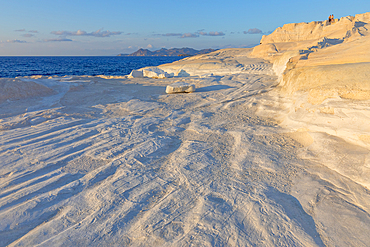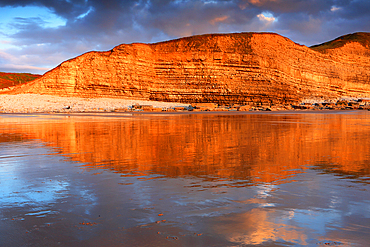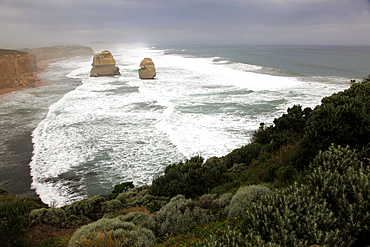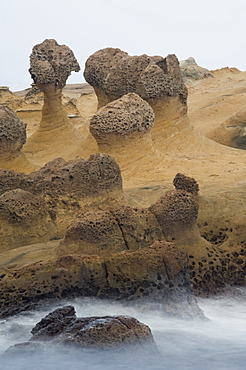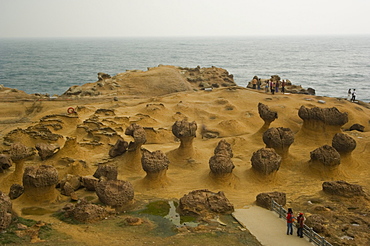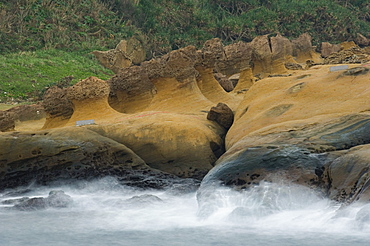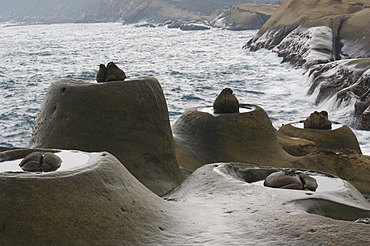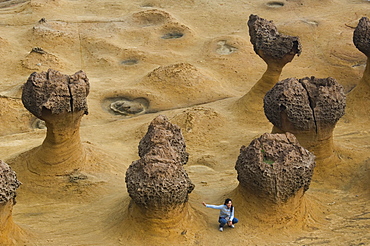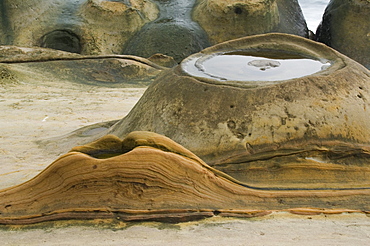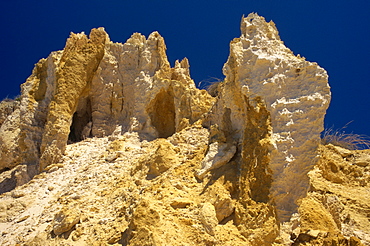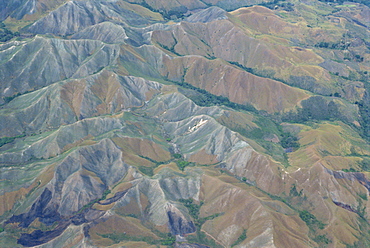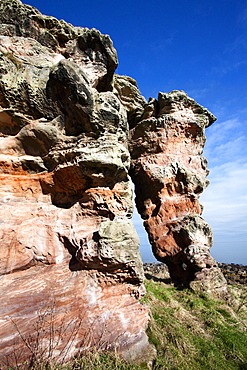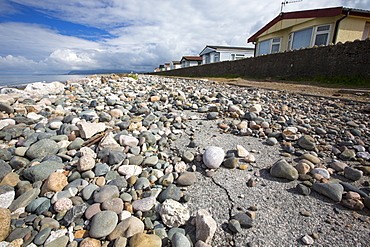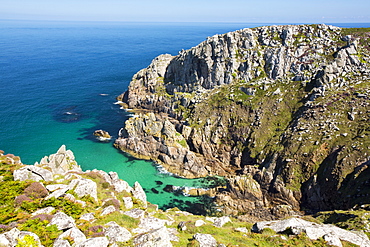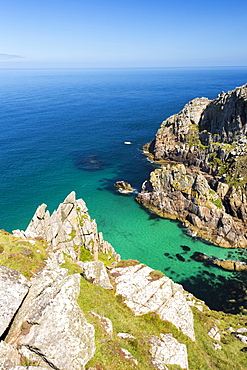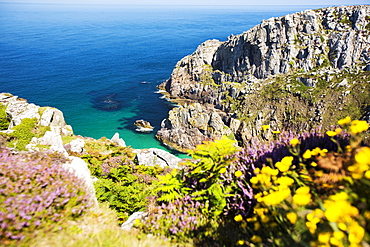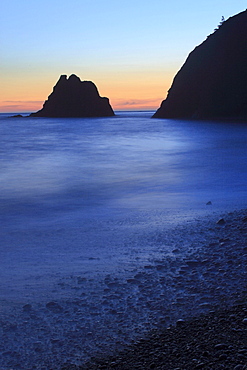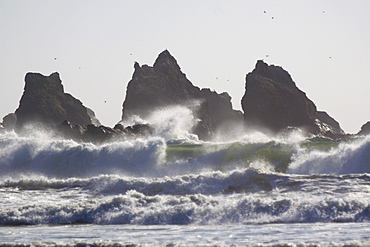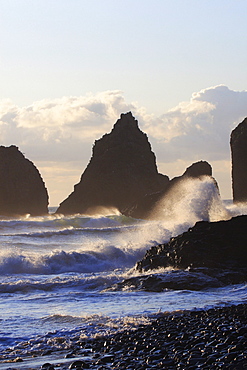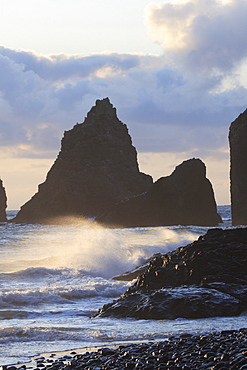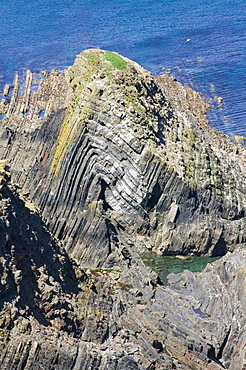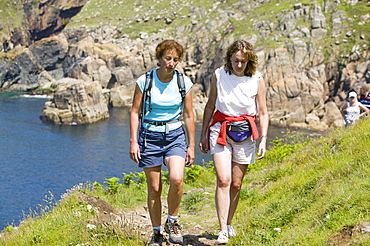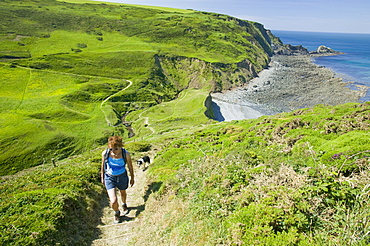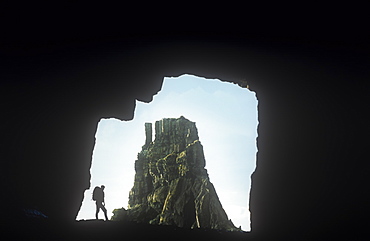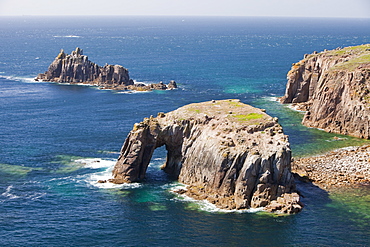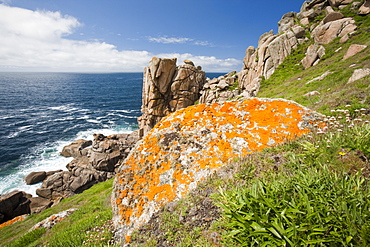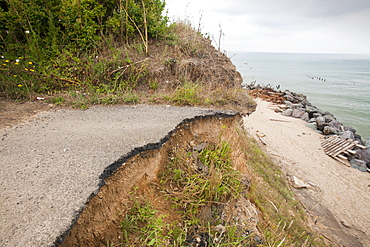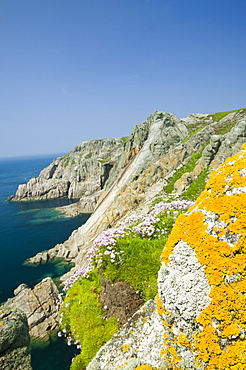Results
« Previous 1 2
114 results found
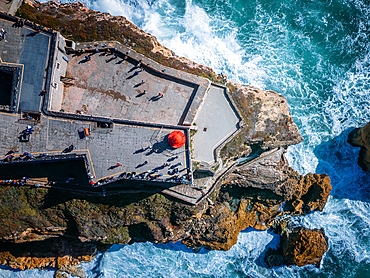
Aerial drone top down view of Nazare lighthouse with waves crashing on rocks beneath, Nazare, Oeste, Estremadura, Portugal, Europe

Surf breaking on lava shoreline at Gardner Bay on Espanola Island in the Galapagos Island Archipelago, UNESCO World Heritage Site, Ecuador, South America
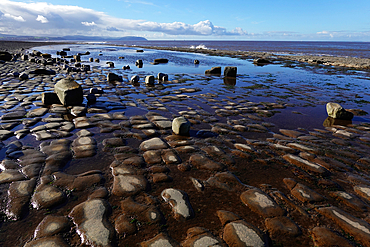
The intertidal zone of the Quantock Coast, West Somerset, contains an abundance of geology and wildlife. It is a Site of Special Scientific Interest (SSSI) and is of international geological importance.
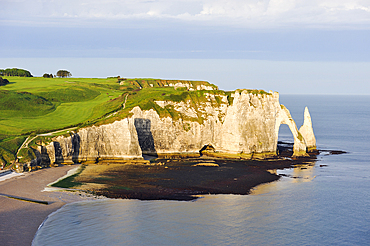
Chalk cliffs with arch and l'Aiguille (the Needle), Etretat, Seine-Maritime department, Normandy region, France, Europe
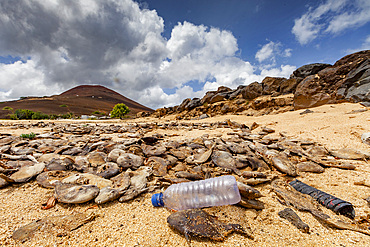
View of massive die-off of black triggerfish on the beach on Ascension Island in the southern tropical Atlantic Ocean, South Atlantic Ocean
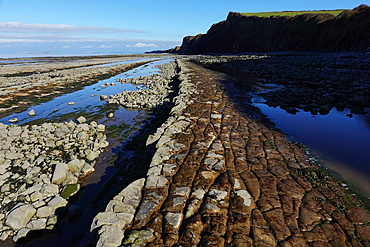
The intertidal zone of the Quantock Coast, West Somerset, contains an abundance of geology and wildlife. It is a Site of Special Scientific Interest (SSSI) and is of international geological importance.
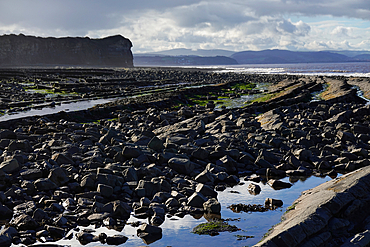
The intertidal zone of the Quantock Coast, West Somerset, contains an abundance of geology and wildlife. It is a Site of Special Scientific Interest (SSSI) and is of international geological importance.

Rills formed in the sandy beach at low tide as found on Bigge Island, Kimberley, Western Australia, Australia, Pacific
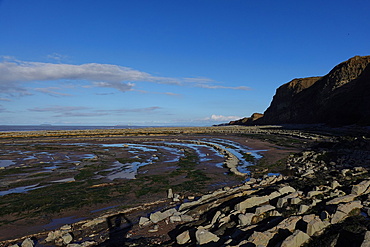
The intertidal zone of the Quantock Coast, West Somerset, contains an abundance of geology and wildlife. It is a Site of Special Scientific Interest (SSSI) and is of international geological importance.
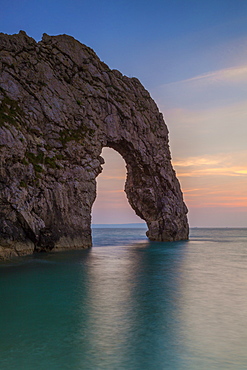
Durdle Door, Lulworth Cove, Jurassic Coast, UNESCO World Heritage Site, Dorset, England, United Kingdom, Europe
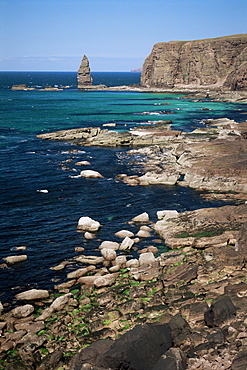
Coastal sea cliffs and stacks, near Cape Wrath and Sandwood Bay, Highland region, Scotland, United Kingdom, Europe
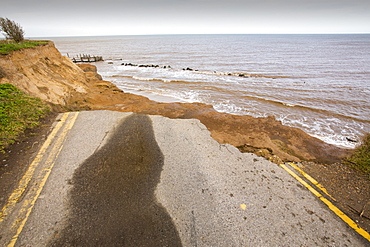
A road eroded and dropping off into the North sea at Happisburgh, Norfolk, a rapidly eroding section of coastline, UK.
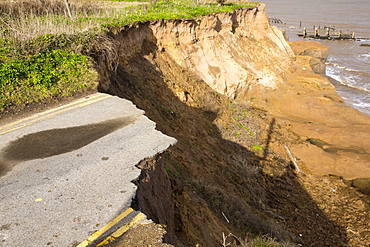
A road eroded and dropping off into the North sea at Happisburgh, Norfolk, a rapidly eroding section of coastline, UK.
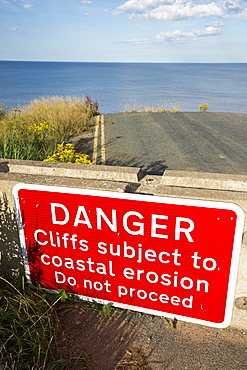
A collapsed coastal road near Skipsea on Yorkshires East Coast, UK. The coast is composed of soft boulder clays, very vulnerable to coastal erosion. This sectiion of coast has been eroding since Roman times, with many villages having disappeared into the sea, and is the fastest eroding coast in Europe. Climate change is speeding up the erosion, with sea level rise, increased stormy weather and increased heavy rainfall events, all playing their part.
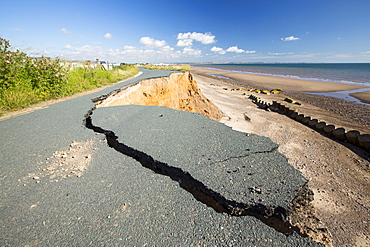
A collapsed coastal road at between Skipsea and Ulrome on Yorkshires East Coast, near Skipsea, UK. The coast is composed of soft boulder clays, very vulnerable to coastal erosion. This sectiion of coast has been eroding since Roman times, with many villages having disappeared into the sea, and is the fastest eroding coast in Europe. Climate change is speeding up the erosion, with sea level rise, increased stormy weather and increased heavy rainfall events, all palying their part.
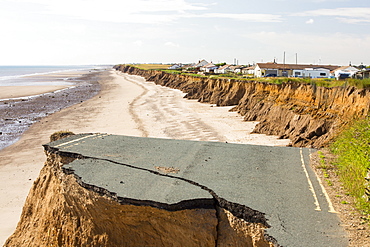
A collapsed coastal road at between Skipsea and Ulrome on Yorkshires East Coast, near Skipsea, UK. The coast is composed of soft boulder clays, very vulnerable to coastal erosion. This sectiion of coast has been eroding since Roman times, with many villages having disappeared into the sea, and is the fastest eroding coast in Europe. Climate change is speeding up the erosion, with sea level rise, increased stormy weather and increased heavy rainfall events, all palying their part.
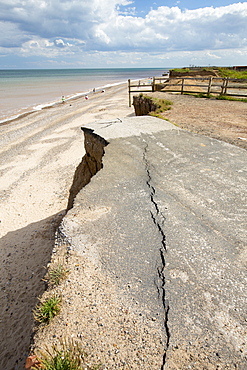
A collapsed coastal road at Easingotn on Yorkshires East Coast, near Skipsea, UK. The coast is composed of soft boulder clays, very vulnerable to coastal erosion. This sectiion of coast has been eroding since Roman times, with many villages having disappeared into the sea, and is the fastest eroding coast in Europe. Climate change is speeding up the erosion, with sea level rise, increased stormy weather and increased heavy rainfall events, all palying their part.
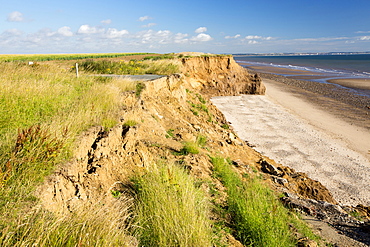
A collapsed coastal road at near Aldbrough on Yorkshires East Coast, near Skipsea, UK. The coast is composed of soft boulder clays, very vulnerable to coastal erosion. This sectiion of coast has been eroding since Roman times, with many villages having disappeared into the sea, and is the fastest eroding coast in Europe. Climate change is speeding up the erosion, with sea level rise, increased stormy weather and increased heavy rainfall events, all palying their part.
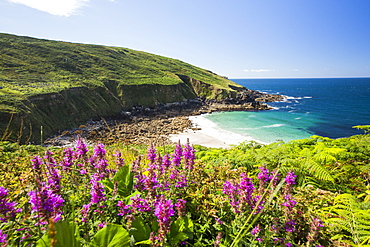
Cornish coastal scenery at Porthmeor Cove near Zennor, UK, with Purple loosestrife (Lythrum salicaria) flowering in the foreground.
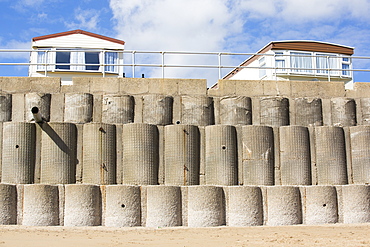
Concrete sea defences at Beach Bank Caravan Park in Ulrome near Skipsea on Yorkshires East Coast, UK. The coast is composed of soft boulder clays, very vulnerable to coastal erosion. This section of coast has been eroding since Roman times, with many villages having disappeared into the sea, and is the fastest eroding coast in Europe. Climate change is speeding up the erosion, with sea level rise, increased stormy weather and increased heavy rainfall events, all playing their part.

A collapsed coastal road at between Skipsea and Ulrome on Yorkshires East Coast, near Skipsea, UK. The coast is composed of soft boulder clays, very vulnerable to coastal erosion. This sectiion of coast has been eroding since Roman times, with many villages having disappeared into the sea, and is the fastest eroding coast in Europe. Climate change is speeding up the erosion, with sea level rise, increased stormy weather and increased heavy rainfall events, all palying their part.
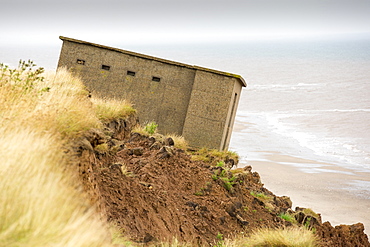
A Second world War lookout post leaning alarmingly and about to tumble over the edge of the cliff near Aldbrough on Yorkshires East Coast, UK. The coast is composed of soft boulder clays, very vulnerable to coastal erosion. This section of coast has been eroding since Roman times, with many villages having disappeared into the sea, and is the fastest eroding coast in Europe. Climate change is speeding up the erosion, with sea level rise, increased stormy weather and increased heavy rainfall events, all playing their part.
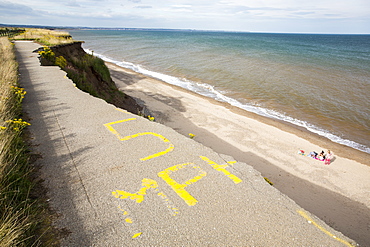
A collapsed coastal road at Barmston on Yorkshires East Coast, near Skipsea, UK. The coast is composed of soft boulder clays, very vulnerable to coastal erosion. This sectiion of coast has been eroding since Roman times, with many villages having disappeared into the sea, and is the fastest eroding coast in Europe. Climate change is speeding up the erosion, with sea level rise, increased stormy weather and increased heavy rainfall events, all palying their part.

A holiday chalet in the sand dunes at low Newton by the Sea on Northumberland's coast stands precarioulsy close to the edge following a severe storm surge in December 2013 that caused considerable erosion to the sand dunes.
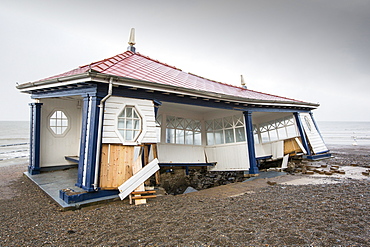
After a week of high tides, storm surges and storm force winds, the sea front promenade of Aberystwyth in Wales has been devastated, with millions of £'s of damage. The crsahing waves punched a large hole in the sea wall and has collapsed Aberystwyth's iconic, Victorian promenade shelter, which has stood for over 100 years. This picture was taken on Wednesday 8th January, 2014, the day the council started to try and clear the thousands of tonnes of beach rubble off the sea front road.
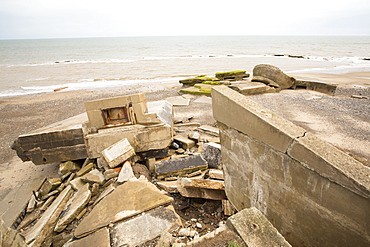
The Remains of the Godwin battery on the beach at Kilnsea at the head of Spurn point on Yorkshires East Coast, UK. Initially constructed during the First World War, the Godwin Battery was added to during the Second World War. It comprised of gun emplacements, search light, barracks, officers’ mess, and a hospital. This section of coastline is the fastest eroding coastline in Europe. The soft boulder clay cliffs are easily eroded and have been eroding since Roman Times, but recently the climate change impacts of increased stormy weather, increased heavy rainfall events and sea level rise have accelerated the rate of erosion. The average rate of attrition is 1.5metres per year, last year it was 5 metres.
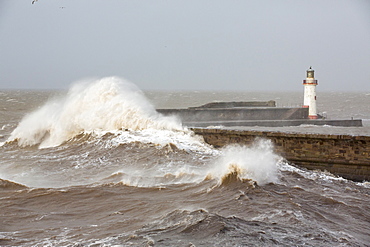
Whitehaven harbour being completely overwhelmed by huge waves during the January 2014 period of storm surge, high tides and storm force winds. The coastline took a battering, damaging the harbour wall and eroding a large section of coastal cliff.
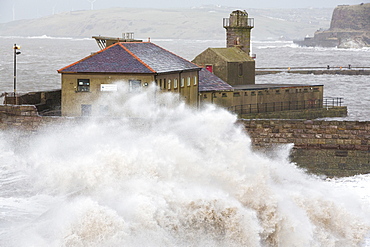
Whitehaven harbour during the January 2014 period of storm surge, high tides and storm force winds. The coastline took a battering, damaging the harbour wall and eroding a large section of coastal cliff.
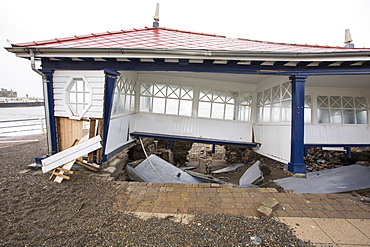
After a week of high tides, storm surges and storm force winds, the sea front promenade of Aberystwyth in Wales has been devastated, with millions of £'s of damage. The crsahing waves punched a large hole in the sea wall and has collapsed Aberystwyth's iconic, Victorian promenade shelter, which has stood for over 100 years. This picture was taken on Wednesday 8th January, 2014, the day the council started to try and clear the thousands of tonnes of beach rubble off the sea front road.

After a week of high tides, storm surges and storm force winds, the sea front promenade of Aberystwyth in Wales has been devastated, with millions of £'s of damage. The crsahing waves punched a large hole in the sea wall and has collapsed Aberystwyth's iconic, Victorian promenade shelter, which has stood for over 100 years. This picture was taken on Wednesday 8th January, 2014, the day the council started to try and clear the thousands of tonnes of beach rubble off the sea front road.
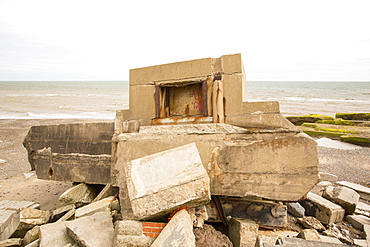
The Remains of the Godwin battery on the beach at Kilnsea at the head of Spurn point on Yorkshires East Coast, UK. Initially constructed during the First World War, the Godwin Battery was added to during the Second World War. It comprised of gun emplacements, search light, barracks, officers’ mess, and a hospital. This section of coastline is the fastest eroding coastline in Europe. The soft boulder clay cliffs are easily eroded and have been eroding since Roman Times, but recently the climate change impacts of increased stormy weather, increased heavy rainfall events and sea level rise have accelerated the rate of erosion. The average rate of attrition is 1.5metres per year, last year it was 5 metres.
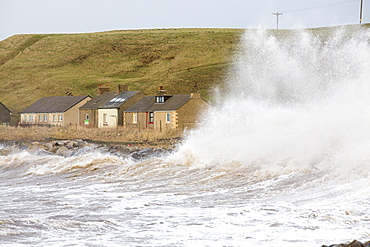
Waves crashing off Parton near Whitehaven during the January 2014 period of storm surge, high tides and storm force winds. The coastline took a battering, damaging the harbour wall and eroding a large section of coastal cliff.
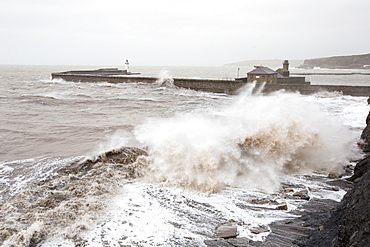
Whitehaven harbour during the January 2014 period of storm surge, high tides and storm force winds. The coastline took a battering, damaging the harbour wall and eroding a large section of coastal cliff.
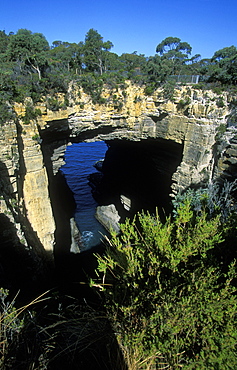
Tasmans Arch, one of the several coastal formations in Tasman National Park, Port Arthur region, Tasman Peninsula, south east, Tasmania, Australia, Pacific

Trees knocked down by undercutting coastal erosion caused by global warming induced sea level rise on Tepuka island off Funafuti Atoll, Tuvalu, Pacific
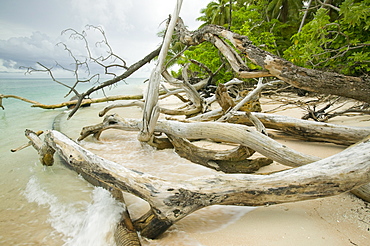
Trees knocked down by undercutting coastal erosion caused by global warming induced sea level rise on Tepuka island off Funafuti Atoll, Tuvalu, Pacific

The lifeboat launching ramp destroyed as waves crashing against the coast at Happisburgh on the fastest eroding section of the UK coast, Norfolk, England, United Kingdom, Europe
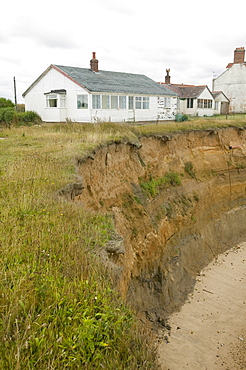
Happisburgh on the fastest eroding section of the UK coast, Norfolk, England, United Kingdom, Europe
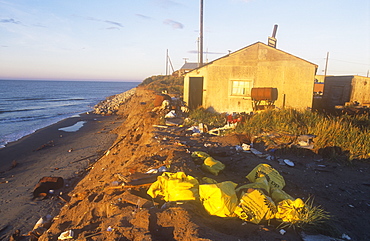
Shishmaref, a tiny island inhabited by around 600 Inuits, between Alaska and Siberia in the Chukchi Sea, United States of America, North America
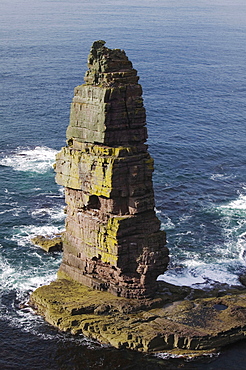
Am Buachaille sea stack on the coast south of Sandwood Bay, Sutherland, Scotland, United Kingdom, Europe
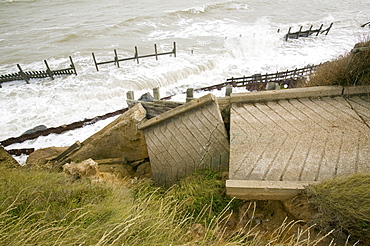
The lifeboat launching ramp destroyed as waves crashing against the coast at Happisburgh on the fastest eroding section of the UK coast, Norfolk, England, United Kingdom, Europe
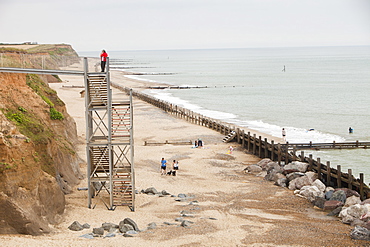
Steps that are the only way to access the beach following recent erosion, Happisburgh, North Norfolk, England, United Kingdom, Europe
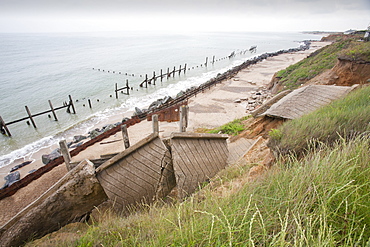
The lifeboat launching ramp destroyed as waves crashing against the coast at Happisburgh on the fastest eroding section of the UK coast, Norfolk, England, United Kingdom, Europe
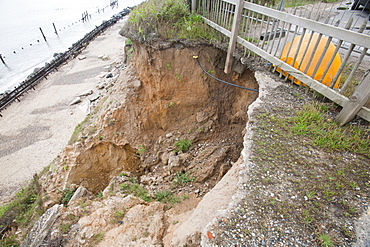
The lifeboat launching ramp destroyed as waves crashing against the coast at Happisburgh on the fastest eroding section of the UK coast, Norfolk, England, United Kingdom, Europe

Trees knocked down by undercutting coastal erosion caused by global warming induced sea level rise on Tepuka island off Funafuti Atoll, Tuvalu, Pacific

Combatting coastal erosion on a beach on the outskirts of Sydney, New South Wales, Australia, Pacific
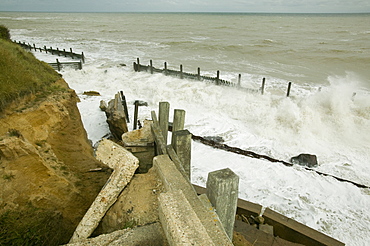
The lifeboat launching ramp destroyed as waves crashing against the coast at Happisburgh on the fastest eroding section of the UK coast, Norfolk, England, United Kingdom, Europe

Trees knocked down by undercutting coastal erosion caused by global warming induced sea level rise on Tepuka island off Funafuti Atoll, Tuvalu, Pacific
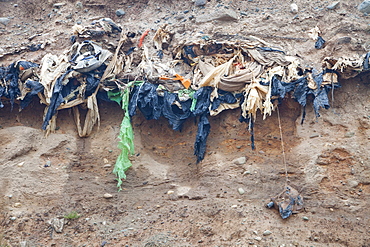
Buried rubbish revealed by coastal erosion on the west coast of Walney Island, Cumbria, England, United Kingdom, Europe
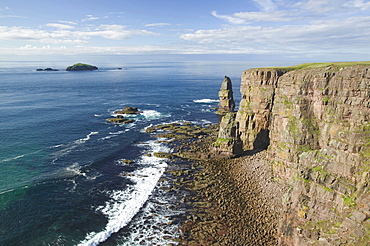
Am Buachaille sea stack on the coast south of Sandwood Bay, Sutherland, Scotland, United Kingdom, Europe
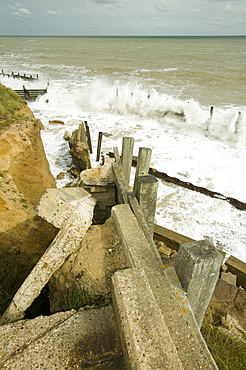
The lifeboat launching ramp destroyed as waves crashing against the coast at Happisburgh on the fastest eroding section of the UK coast, Norfolk, England, United Kingdom, Europe
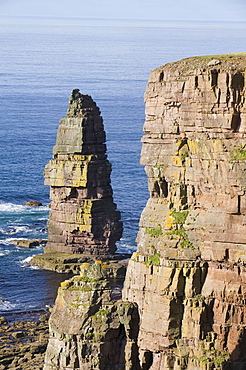
Am Buachaille sea stack on the coast south of Sandwood Bay, Sutherland, Scotland, United Kingdom, Europe
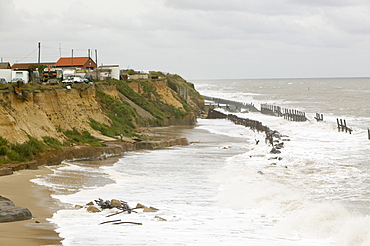
Waves crashing against sea defences at Happisburgh on the fastest eroding section of the UK coast, Norfolk, England, United Kingdom, Europe

Autumn and winter storms eroding the coastline of Shishmaref, a tiny island inhabited by around 600 Inuits, between Alaska and Siberia in the Chukchi Sea, United States of America, North America

Large rocks placed on the shore of the west coast of Walney Island, to prevent coastal erosion, Cumbria, England, United Kingdom, Europe
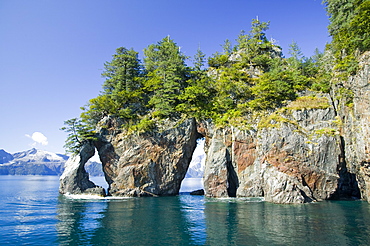
Coastal scenery in the Kenai Fjords National Park in Alaska, United States of America, North America

McCleods Maidens, sea stacks, at Idrigill point, west coast, Isle of Skye, Scotland, United Kingdom, Europe
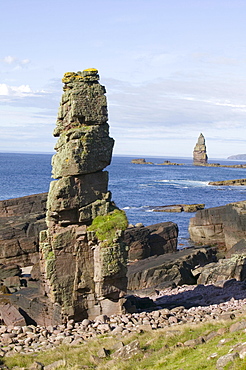
Am Buachaille sea stack on the coast south of Sandwood Bay, Sutherland, Scotland, United Kingdom, Europe

Buried rubbish revealed by coastal erosion on the west coast of Walney Island, Cumbria, England, United Kingdom, Europe
